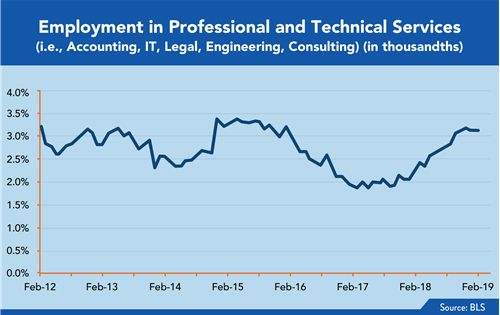
The Blackman Report for March 2019
The headline growth in the number of payrolls in the January BLS labor report was well below expectations, but many aspects of the report (unemployment rate and white-collar employment) were solid. The overall U.S. labor market continues to grow at a solid pace of 1.7 percent year-over-year, and employment trends in the professional job categories continue to grow faster than total employment. In fact, professional and business service additions exceeded 42,000.

What does this mean for employers of skilled professionals? Despite the tepid “headline” BLS number, there is no softness in the highly-skilled technology and finance segments of the labor market. Highly skilled resources will continue to have multiple opportunities to consider in this market. At the same time, wage inflation is also rising.
These factors indicate to clients that to get the talent needed to drive their business, they need to consider the following:
Competitive compensation. With a plethora of data-driven resources at their fingertips, today’s professionals are aware of their value in the marketplace.
Positive work environment. Today’s professionals want the ability to grow their expertise and expand their skill set.
Efficient hiring process. The person you want to bring onboard is likely being sought out by other organizations as well. Therefore, it is imperative that your hiring process is efficient and timely.
Amid the current labor conditions, clients should proactively plan their human capital strategy with their Kforce representative as skilled candidates have many choices in today’s market. For job seekers, Kforce can help align your skills and goals with the right organization to continue your career growth.

About the Author, Michael Blackman
As Chief Corporate Development Officer at Kforce, Michael Blackman, a 25-year Kforce veteran, is the primary focal point for the firm with the Wall Street and financial communities. He is regularly sought out by leading economists for his perspectives on the economy and labor markets, and he contributes to a number of key proprietary economic publications.
